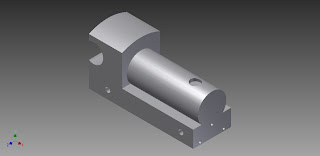We recieved 15 Achievements!
Design Achievements:
• Define the Problem and Brainstorm Solutions - State the problem you are designing a solution for. List at least 20 ideas you have regarding your solution.
• Criteria & Constraints - List or reference the specified Criteria and Constraints you're designing for. List at least one implied criteria. List at least three implied contsraints.
• Sketch Ideas - Draw 3 different sketches for possible designs. Label at least 3 key features for each sketch. Describe the feature's functionality so a viewer understands why the called out feature is important.
• Prototype Ideas - Craft physical prototypes (models) of each of your three sketches. Use a notecard or post it note to call out at least one key feature on each model. Post the images to your blog and describe the key feature that you've pointed out on each.
• Select an Approach - Generate feedback (+, change, ?, !) and make a decision matrix regarding your sketches/prototypes. Specify the approach you've chosen and justify your selection.
+: We had a pointed from so we wouldn't plow through the water, we could cut through it.
Change: For the box design we thought the weight wouldnt be distributed how it should.
?: Why tho coffin style?
!: The length of the design we went with really helped the weight be distributed properly.
• Surface area! - Calculate how much surface area you can cover with your given duct tape. How many sf can you cover with one roll? How many can you cover with all your rolls? What % efficiency do you think you can achieve with your overlap?
Build Achievements:
• Build It! - Build your watercraft. Your build must meet the standards of construction (100% covered in Duct Tape). Document it with a presentable photo.
Test Achievements:
• The Farthest - Awarded to the team that can travel the furthest (laps)
• The Longest - Awarded to the team with the watercraft that floats the longest (multiple teams may be awarded this achievement if multiple boats remain afloat at the end of our competition period).
• Balance Master - Awarded if you can have at least one person stand for 5 seconds in the boat (you must conduct this away from the edge of the pool so that non one falls over and hits their head)
• Videographer - Take video of the challenge and post to your blog.
Reflection Achievements:
• Feedback - Generate ten items of feedback for your effort (from the design/build process and/or the actual product). Make sure you include at least one item of feedaback in each of our four feedback areas (+, change, ?, !)
+: Our canoe floated!! We were able to use a lot of cardboard and tape.
change: I would add more cardboard to the triangle in the front it began to gain water quickly
?: What would happen if we added one more layer of cardboard to the bottom of the boat?
!: Our canoe did quite well, everyone was really enthusiastic about it, which definitely helped!
• How Low Did You Go? - How low in the water did your canoe sit (roughly)? Was it suprising how little your boat went down in the water? What is the unit weight of water in pounds? How much did your pilot weigh (roughly)? Use math to help explain the depth that your boat sat in the water.
I would say we rougly sat down about 2 inches in the water. It was actually surprising how high it sat. A cubic foot of water is about 68 pounds, our pilot weighed about 120 pounds.
• Redesign - If we were to do another Carboard Canoe race next semester, what would you build? Draw from everything you experienced in your class and propose the most competative solution. Include a sketch with key features and dimensions labeled.
We could add flats to the side of our canoe just for extra stabability!
• (Make Your Own Achievement) - Make an achievement of your own design that you can award yourself for something awesome your team did. (Example "Transformer" - although our canoe sunk, our team was able to convert it into a surfboard style design and continue competeting!)
Extreme Balance-Stand up on your float for atleast 20 seconds!


















































